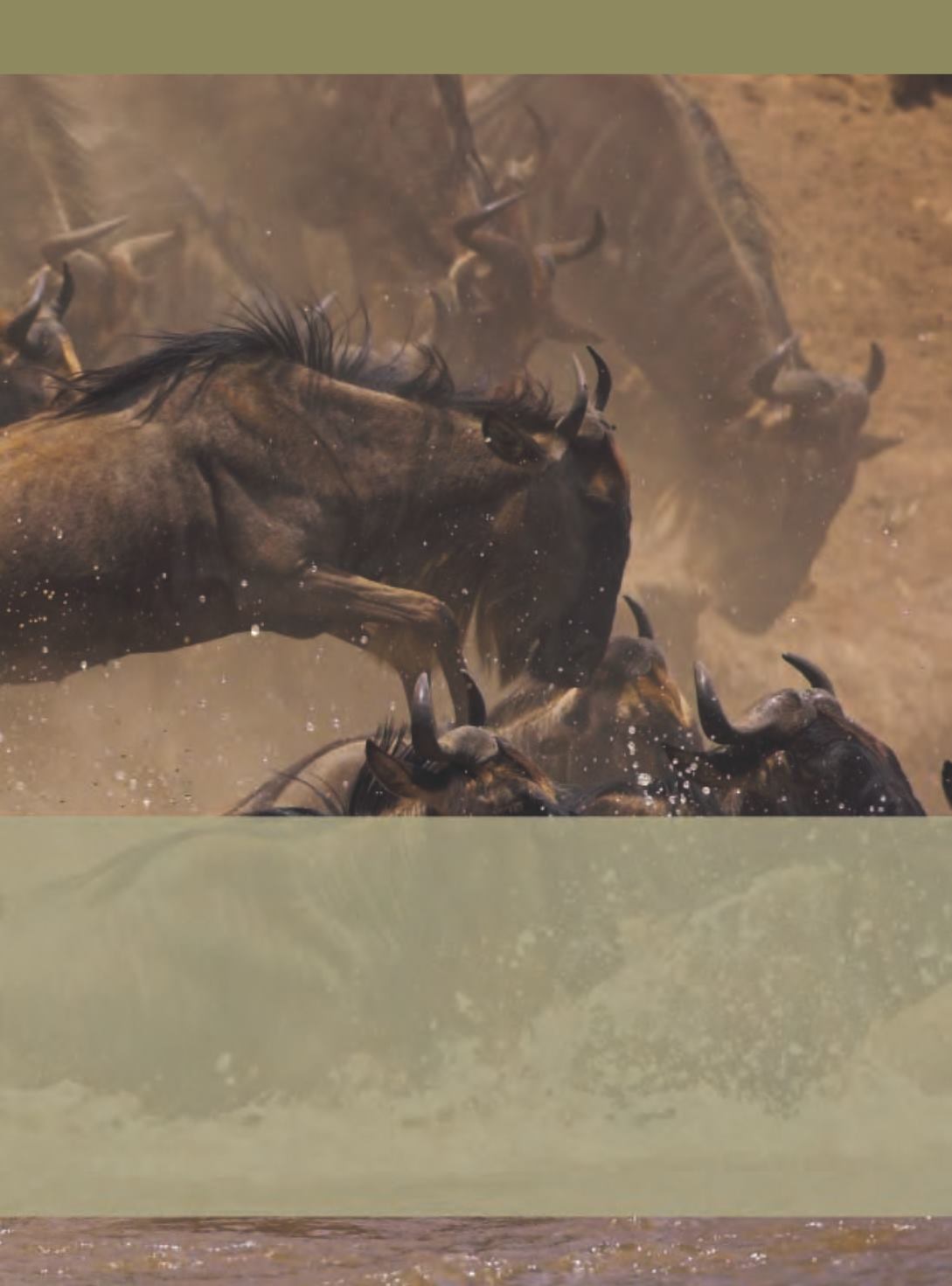
45
Serengeti, derived from the Masai, meaning ‘endless
plains’, is a fitting title for Tanzania’s most famous
national park. Many species of game are resident all
year throughout the park, whilst vast numbers of
wildebeest and large herds of zebras migrate from
one area to another in search of fresh grazing.
The park is broadly divided into five areas:
The Central Serengeti is an ideal location at the
heart of the national park, as it is relatively easy to
visit other areas of the park from here.
Vast rolling plains that stretch for miles are found in
the Southern Serengeti. From December to March
this area is witness to the calving season. As the
rains stop, the wildebeest and zebras, with their
young, begin their migratory journey.
The Western Serengeti stretches as far as Lake
Victoria. The migrating wildebeest and
zebra move through here in May and June and are
confronted by the crocodile infested Grumeti River.
The Eastern Serengeti is more remote with less
visitors. It hosts a greater number of elephants than
elsewhere in the park and the bird life is impressive.
The migration moves through this region to reach
the Masai Mara.
The Northern Serengeti features rolling plains and
riverside woodlands, home to lots of wildlife. The
crocodile-infested Mara River is where the action
happens when the migratory wildebeest cross in to
the Masai Mara in Kenya.


